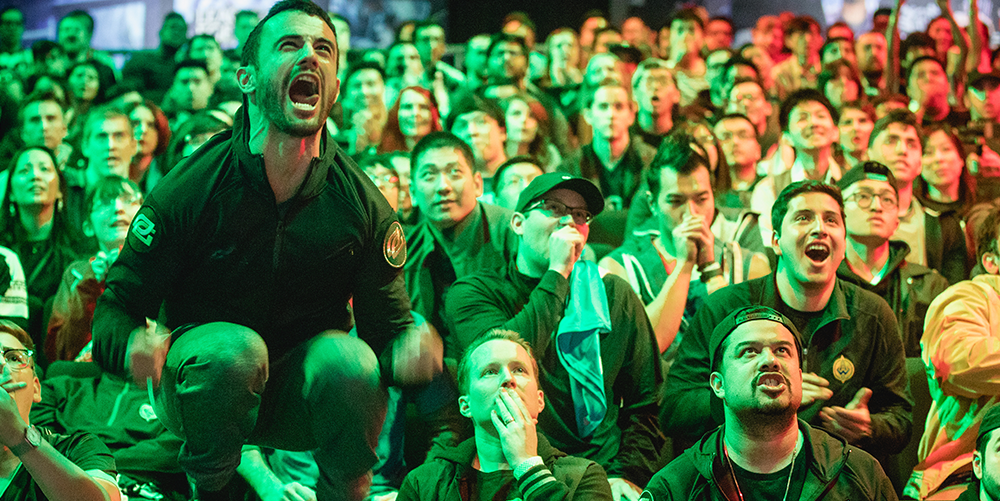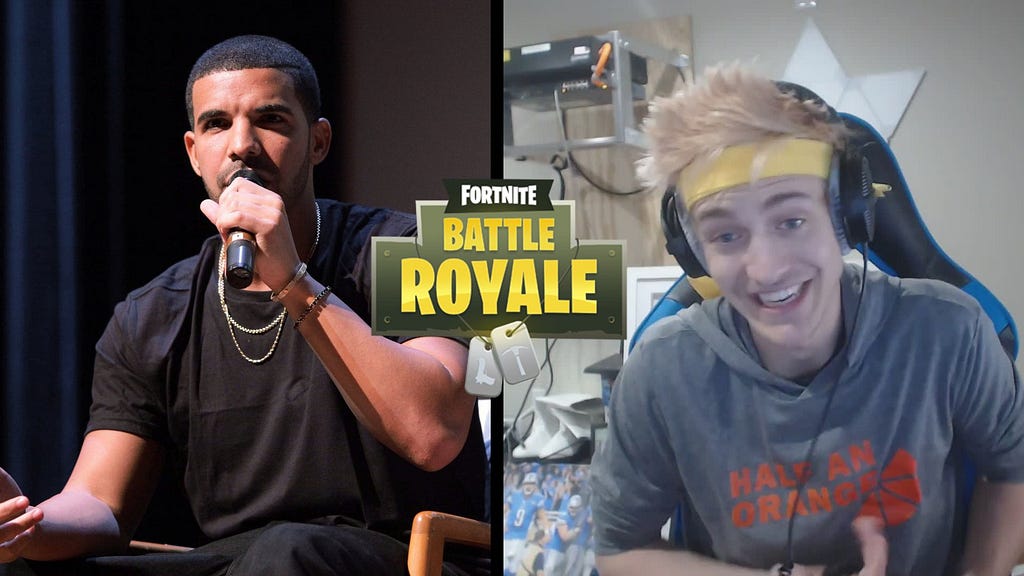Latest news about Bitcoin and all cryptocurrencies. Your daily crypto news habit.
5 Biggest esports Takeaways from SXSW Gaming and GDC 2018
What are esports investors, gamers, game-makers and sponsors spending their time thinking about with respect to esports right now?
 H3CZ and J watch the first OpTic LCS competition earlier this year
H3CZ and J watch the first OpTic LCS competition earlier this year
I wanted to answer that question during my time at SXSW Gaming, and GDC during the last two weeks. Below, are my thoughts on key takeaways based on conversations with various industry leaders at these events.
1) Gaming is becoming ‘pop culture’
 Drake — Ninja stream draws 650,000 concurrent — sets record
Drake — Ninja stream draws 650,000 concurrent — sets record
As if we needed Drake and Ninja to tell us this. The buzz in the last couple of weeks has been about the incredible draw their record shattering stream obtained. However, nightly I’m logging in and catching a streamer I haven’t watched in months only to see their concurrent viewership numbers have gone from about 600/night a few months ago to 25,000 a night now. It’s not just Ninja, Doc and Drake. There is a massive migration of eyeballs and money to watching others play video games online. Gaming is the perfect solution to the incessant short form content desire of millennial consumers. This is just the early days.
How does a kid make $500,000 a month streaming video games on the internet? Gaming has become pop culture, that’s how. This content fits a demand that no other content creators are providing.
According to the survey data in this post from Dexerto, millennial men are watching more esports than traditional sports in the United States. The next generation of content consumers are cutting the cord, and consuming shorter form content on multiple devices while being actively engaged with the viewing experience. On Sundays, the NFL can’t scratch that itch for this group of people who will be the decision makers on how discretionary household income is spent within the next decade.
2) Yet, many are just now realizing, it’s a ‘thing’
While esports is a large market, and growing rapidly, obviously many people are still learning about it. We are still in the education phase. There is still much explaining of this phenomenon that is required to bring people up to speed. I feel this is an indicator that growth is far from done accelerating in this space. Some would say this shows a lack of interest, but I think those people aren’t looking at a broad data set.
A market test I like to run is frequently asking Uber drivers about a topic. My sense is that by the time a majority of my drivers have become familiar with a topic, then maybe it has reached critical mass.
Where is this all going? Esports used to be the biggest thing, that nobody had ever heard of. Now a lot of non-endemic sponsors are getting involved. Money is flowing this way and more people will be making more money playing video games in the future, this is just the beginning.
Why hasn’t it caught on before now? Great question, but it has been a big thing for a while. Technology has caught up and enabled sharing, community, viewership, streaming, etc. to bring the content to the masses.
3) So, where are we in the industry growth life cycle?
The growth of the industry seems to be accelerating at a faster rate of change all the time. Are we getting close to the point where the acceleration of growth slows, or flattens, or even declines? Or are we not even close and has growth not reached peak acceleration? Everytime I think I have that figured out, I look back to the last time I thought I had it figured out and realize I wasn’t even close to calling the peak of the rate of change.
The 2020 esports industry forecast (size in terms of dollars) was about $350mm just a few years ago. Now the analysts are forecasting between $1.5bn and $2.0bn for the market size in 2020. I’ve seen some reports showing it even higher for 2020. They key here isn’t the size of the 2020 market, but rather how often the analysts are updating their estimates on the industry size an the scale of those revisions upward.
It’s still really early in the game. I don’t want to mislead you, there are some bad investment opportunities out there in almost every industry and esports is no different. However, with the mass of attention and interest flooding to this space, there will be a number of people who make quite a bit of money here in the next few years.
4) Fan engagement is critical
Just about everyone is talking about this. The people who are talking intelligently about it realize how gamers, and non-gamers consume gaming content. Gamers usually watch on one monitor while playing on another screen (unless you have one of these)resulting in high engagement during the broadcast of that content. Viewing on mobile devices also helps drive engagement as well. However, we all know that monetization of esports fans is far below that of traditional sports fans.
How do we close the gap between what an average esports fan spends per year (approx. $3.64 per fan per year) and a fan of, for example, the NBA (approx $15 per fan per year)? This is a question a lot of industry insiders are discussing daily.
How do we get advertisers to spend the same amount of money per eyeball during an esports broadcast as they spend during a Thursday Night Football broadcast? Maybe the better question is how do we increase the value of advertising on short form content platforms versus traditional media where attention and engagement are often lower than that of an esports audience?
5) Where to invest? How do you get exposure?
Finally, I hear a lot of people talking about getting the right exposure to the space. It depends on who you are and what risk/return profile you’re looking for. You could do anything from invest in one of the public, dividend paying, game publishers or you could go all the way down the asset-class spectrum to the illiquid angel/seed stage startups like we do (assuming you have access to the right opportunities).
A lot of people are slapping the word “esports” on a business to attract investors now. Be careful. Frankly, there are only a few places you should be looking. For me, it’s all about marketplaces, channel diversification, creating leverage in spite of lack of IP ownership, and supporting the owners of IP in their efforts to increase monetization.
Here are some of the themes I feel are worthy of investment in the esports space right now:
- Create leverage in an IP driven sector
- Channel diversification
- Marketplaces
- Supporting IP owners (game developers, etc.) as they drive monetization
- Help people get better at playing games
- Create community
- Improve game play experiences / speed / connectivity
What business can you build that wins, even though the game makers own the IP? How do you add value-added services to the game makers, players, viewers, sponsors, teams, and others?
In conclusion, I think there are many topics worth discussing right now in this space, but these are the ones that seemed to come up over and over again during industry events during March, 2018. I can’t wait to see how the space evolves even further over the next couple of years.
Stephen Hays is Managing Partner at Deep Space Ventures, VC firm based in Dallas, TX that focuses on both esports and B2B enterprise startups.
Follow Stephen on Twitter Here
Read More About Deep Space Ventures Here
5 Biggest Esports Takeaways from SXSW and GDC 2018 was originally published in Hacker Noon on Medium, where people are continuing the conversation by highlighting and responding to this story.
Disclaimer
The views and opinions expressed in this article are solely those of the authors and do not reflect the views of Bitcoin Insider. Every investment and trading move involves risk - this is especially true for cryptocurrencies given their volatility. We strongly advise our readers to conduct their own research when making a decision.
